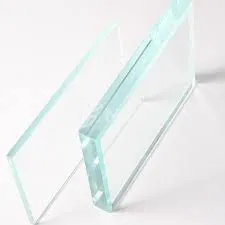The Uses and Benefits of Tempered Glass
Tempered glass, also known as toughened glass, is a type of safety glass that has been treated by controlled thermal processes to increase its strength compared to normal glass. This treatment enhances its durability, making it an essential material across various industries. The uses of tempered glass are diverse, ranging from architecture to automotive applications, and understanding its benefits can shed light on why it has become a preferred choice for many manufacturers and designers.
One of the most prominent uses of tempered glass is in building and construction. It is commonly employed in windows, doors, and facades, providing not only visual appeal but also significant safety advantages. In the event of breakage, tempered glass shatters into small, blunt pieces rather than sharp shards, reducing the risk of injury. This characteristic is particularly critical in high-rise buildings, where the glass panels must withstand not only wind and weather but also potential impact from nearby construction or natural events.
The Uses and Benefits of Tempered Glass
In addition to its uses in construction, tempered glass is widely used in the automotive industry. Car windows, windshields, and sunroofs often utilize tempered glass for its strength and safety features. Upon impact, tempered glass can withstand significant forces, protecting passengers from injury while also enhancing the structural integrity of the vehicle. Furthermore, the use of tempered glass in vehicles ensures better resistance to thermal stress, preventing warping or cracking during extreme temperature fluctuations.
tempered glass use
Another notable application of tempered glass is in furniture design. Coffee tables, shower doors, and shelving units often feature tempered glass due to its ability to combine elegance with safety. The strength of tempered glass allows for thinner designs, creating a sleek appearance while maintaining structural support. This makes it a popular choice in modern interior design, where transparency, light, and open spaces are highly valued.
Additionally, tempered glass is used in various electronic devices, such as smartphones, tablets, and monitors. The increased durability that tempered glass offers is crucial in protecting delicate screens from impacts and scratches, enhancing the longevity of devices. Manufacturers frequently employ tempered glass for screen protectors, providing users with an additional layer of security against everyday wear and tear.
The benefits of tempered glass also extend to its thermal stability. It can withstand sudden temperature changes, making it suitable for applications that involve exposure to heat, such as cooktops and fireplaces. The resilience of tempered glass against thermal shock allows it to be safely used in environments where other forms of glass might fail.
In conclusion, tempered glass stands out as a remarkable material that meets the safety, durability, and aesthetic needs of various applications. From architecture and automotive to furniture and electronics, its usefulness is evidenced by its widespread adoption. The unique properties of tempered glass not only enhance the functionality and safety of products but also add to their visual appeal. As industries continue to evolve and innovate, the reliance on tempered glass will undoubtedly grow, ensuring its place as a staple in modern design and engineering.
 Afrikaans
Afrikaans  Albanian
Albanian  Amharic
Amharic  Arabic
Arabic  Armenian
Armenian  Azerbaijani
Azerbaijani  Basque
Basque  Belarusian
Belarusian  Bengali
Bengali  Bosnian
Bosnian  Bulgarian
Bulgarian  Catalan
Catalan  Cebuano
Cebuano  Corsican
Corsican  Croatian
Croatian  Czech
Czech  Danish
Danish  Dutch
Dutch  English
English  Esperanto
Esperanto  Estonian
Estonian  Finnish
Finnish  French
French  Frisian
Frisian  Galician
Galician  Georgian
Georgian  German
German  Greek
Greek  Gujarati
Gujarati  Haitian Creole
Haitian Creole  hausa
hausa  hawaiian
hawaiian  Hebrew
Hebrew  Hindi
Hindi  Miao
Miao  Hungarian
Hungarian  Icelandic
Icelandic  igbo
igbo  Indonesian
Indonesian  irish
irish  Italian
Italian  Japanese
Japanese  Javanese
Javanese  Kannada
Kannada  kazakh
kazakh  Khmer
Khmer  Rwandese
Rwandese  Korean
Korean  Kurdish
Kurdish  Kyrgyz
Kyrgyz  Lao
Lao  Latin
Latin  Latvian
Latvian  Lithuanian
Lithuanian  Luxembourgish
Luxembourgish  Macedonian
Macedonian  Malgashi
Malgashi  Malay
Malay  Malayalam
Malayalam  Maltese
Maltese  Maori
Maori  Marathi
Marathi  Mongolian
Mongolian  Myanmar
Myanmar  Nepali
Nepali  Norwegian
Norwegian  Norwegian
Norwegian  Occitan
Occitan  Pashto
Pashto  Persian
Persian  Polish
Polish  Portuguese
Portuguese  Punjabi
Punjabi  Romanian
Romanian  Russian
Russian  Samoan
Samoan  Scottish Gaelic
Scottish Gaelic  Serbian
Serbian  Sesotho
Sesotho  Shona
Shona  Sindhi
Sindhi  Sinhala
Sinhala  Slovak
Slovak  Slovenian
Slovenian  Somali
Somali  Spanish
Spanish  Sundanese
Sundanese  Swahili
Swahili  Swedish
Swedish  Tagalog
Tagalog  Tajik
Tajik  Tamil
Tamil  Tatar
Tatar  Telugu
Telugu  Thai
Thai  Turkish
Turkish  Turkmen
Turkmen  Ukrainian
Ukrainian  Urdu
Urdu  Uighur
Uighur  Uzbek
Uzbek  Vietnamese
Vietnamese  Welsh
Welsh  Bantu
Bantu  Yiddish
Yiddish  Yoruba
Yoruba  Zulu
Zulu 

